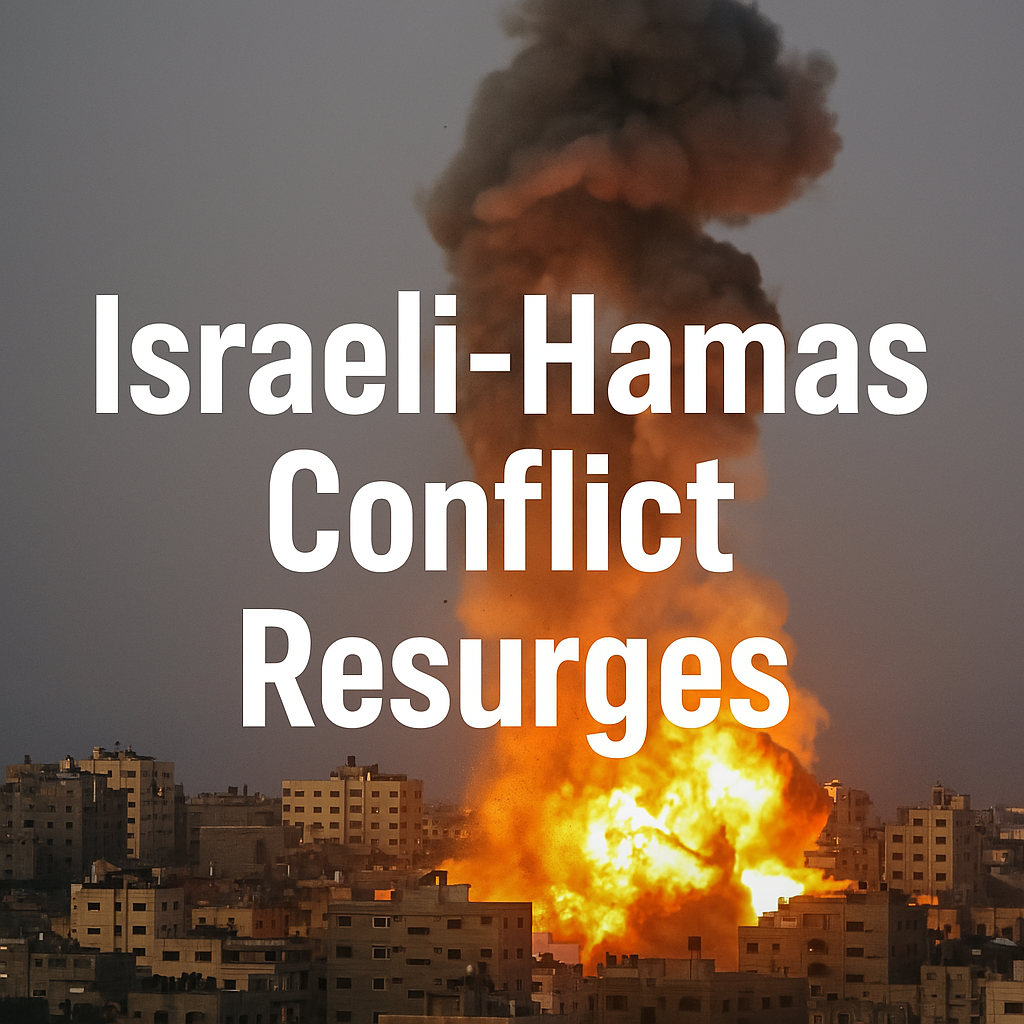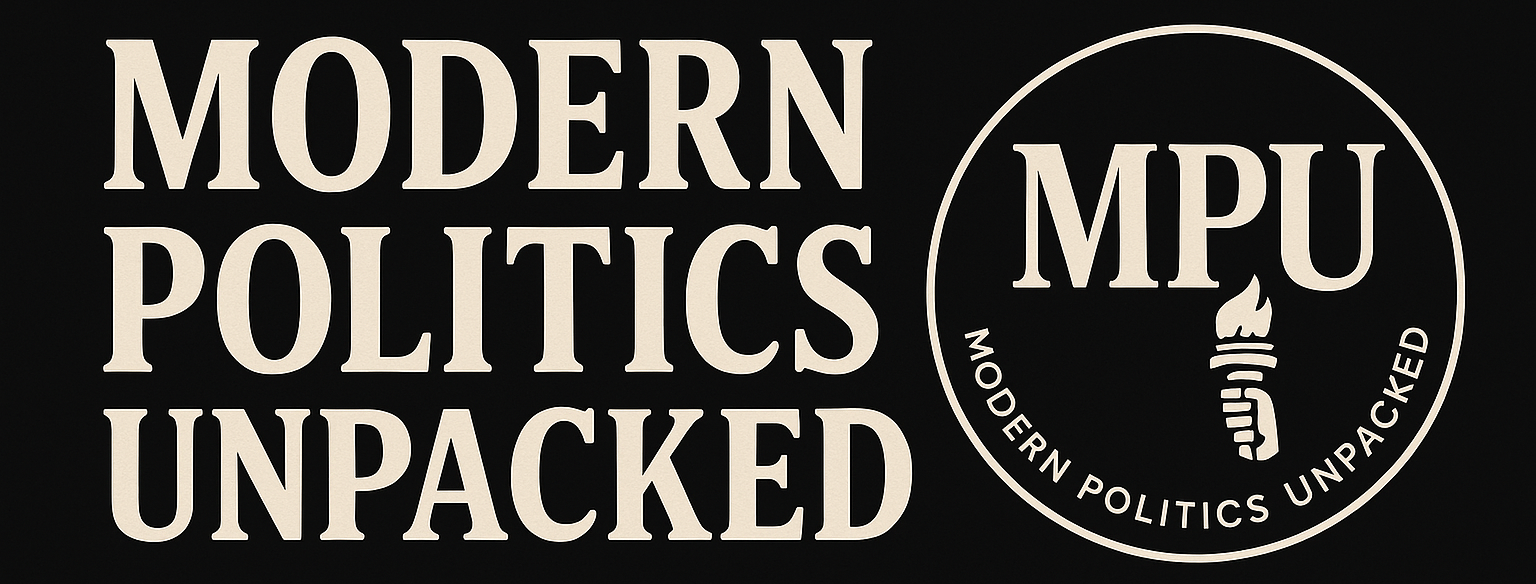Ceasefire Collapses: The Resurgence of the Israel-Hamas Conflict and Its Global Ripples

Just months after a temporary ceasefire brought relative calm to Gaza and southern Israel, violence has returned with renewed intensity. Over the past week, Israeli Defense Forces (IDF) have resumed operations around the city of Rafah, citing new intelligence on Hamas military activity. In response, Hamas militants launched a wave of rocket attacks, prompting the Israeli government to escalate strikes across the Gaza Strip.
What was once a cautious peace has unraveled into a dangerous new chapter of conflict, one with regional and global implications—including for the United States.
What Triggered the Escalation?
- Failed Ceasefire Talks: A Qatari-Egyptian brokered peace framework collapsed in late March after disputes over hostage releases and aid access.
- Renewed Rocket Fire: Hamas launched over 400 rockets into Israel, targeting Tel Aviv and Ashdod. The Iron Dome intercepted most, but some landed in civilian areas.
- Rafah Offensive: The Israeli military responded with a ground operation in Rafah, a city already overwhelmed with displaced civilians. Israel claims the area is Hamas’ last major stronghold.
Humanitarian Fallout in Gaza
The United Nations has called the situation in Gaza “catastrophic and unsustainable.” Rafah, in particular, is now home to over 1.4 million displaced Palestinians, many of whom fled earlier IDF operations in northern and central Gaza.
Key concerns:
- Electricity and water systems are failing under blockade conditions.
- Food and medical supplies are at critically low levels.
- More than 30,000 people have been killed since October 2023, according to Gaza's Health Ministry—figures that include both combatants and civilians.
The Israeli government maintains that it is targeting only Hamas infrastructure, but international human rights organizations have raised alarm over civilian casualties and blocked aid convoys.
Regional and Global Reactions
Arab World:
- Jordan and Egypt have condemned Israel’s operations in Rafah, with Egypt reinforcing its border.
- Iran-backed militias in Lebanon and Syria have threatened to escalate fighting on Israel’s northern front.
United States:
- President Biden has called for “urgent de-escalation” and reiterated support for Israel’s right to self-defense—while warning against a full-scale ground invasion in Rafah.
- The U.S. is simultaneously pushing for humanitarian aid corridors, though trust between the U.S. and Netanyahu’s government is strained.
European Union:
- A divided EU has issued calls for restraint, but member states disagree on labeling actions by either side as war crimes.
What This Means for American Citizens
While the conflict is happening half a world away, it directly affects Americans in several key ways:
1. Military and Diplomatic Involvement
- The U.S. remains Israel’s primary arms supplier and political ally.
- Additional U.S. naval assets were recently deployed to the Eastern Mediterranean as a show of support and deterrence.
- American diplomats are actively mediating ceasefire discussions, with Secretary of State Antony Blinken expected to visit Cairo and Tel Aviv next week.
2. Political Polarization at Home
- The conflict has sharpened political divides in the U.S., with protests erupting in major cities.
- College campuses and labor unions are seeing renewed debates over U.S. funding of Israel, with calls for conditioning aid.
- Both parties are using the crisis to mobilize their bases ahead of the 2024 election. Republicans largely back unconditional support for Israel; progressive Democrats are demanding more restraint and accountability.
3. Security Concerns
- Heightened threats from extremist groups calling for attacks on U.S. and allied targets in response to the war.
- Jewish and Muslim communities across America report increased harassment and hate crimes—reflecting tensions inflamed by the conflict.
4. Economic Ripple Effects
- Global instability contributes to volatility in oil markets, which could raise gas prices for American consumers.
- Defense contractors and supply chains tied to the military-industrial complex may see a surge in demand, affecting stock markets and employment in certain regions.
Where This May Be Headed
Analysts warn that without substantive diplomatic breakthroughs, this round of fighting may be longer and more destructive than any since 2014. Both sides appear committed to maximalist goals—Israel seeking total demilitarization of Hamas, and Hamas vowing resistance until the blockade ends.
Unless a third-party negotiation effort gains traction, this could devolve into another prolonged siege, with high civilian costs and expanding regional instability.
Final Thoughts: A Conflict with No Easy Answers
The Israel-Hamas conflict remains one of the most emotionally and politically charged issues in global affairs. The current escalation is a tragic reminder of how quickly diplomacy can give way to war—and how civilians, both abroad and at home, are caught in the crossfire.
For American citizens, the consequences are not just moral or ideological. They are practical, political, and personal—reflected in the price of gas, the tone of political debates, the safety of diaspora communities, and the trajectory of U.S. foreign policy.
Sources:
